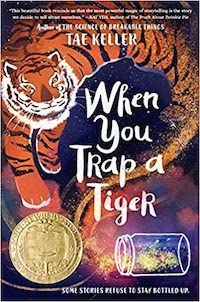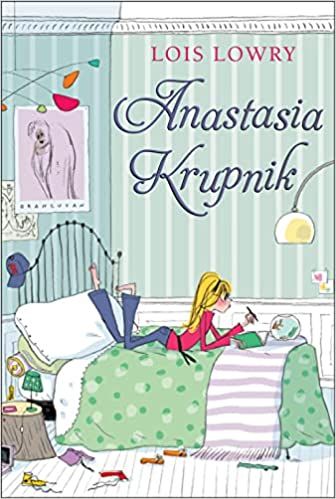When you think of the best children’s books of all time, what comes to mind? Older books and classics? Newer books that better represent today’s children and our world? Books recommended by notable organizations? The books that come up on much-lauded lists like Mensa For Kids’ Excellence in Reading list and the National Endowment for the Humanities’ Summertime Favorites list include a lot of older books that are considered classics (or some of the “best” of all time), and in all honesty, I find the diversity to be lacking and the stories to be a bit stuffy.
When I think of the best children’s books of all time, I think of classics that I’d want to share with my son, but I also think of more modern books that reflect his world. As I mentioned in this post about whether a children’s canon should exist, our world is constantly changing, and children’s literature should change and evolve, as well — so our evaluation of what the “best” children’s books are should also be fluid, in my opinion. Those books that stand the test of time will stay, and those who are outdated will still be around, but there are better choices to be had.
I could list dozens and dozens of books that I think are the “best” children’s books of all time. Tuck Everlasting, The Westing Game, Are You My Mother — all are personal favorites and ones that I think are either timeless or influential. That also doesn’t even touch on the number of series that have been huge influences: Magic Tree House and Magic School Bus (I’ve written about them before), or Junie B. Jones, Baby-Sitters Club, and countless others. But who decides what is best, and how? Are we looking at how “literary” they are? Issues of representation and how inclusive they are? Are we seeing how influential they’ve been, on both readers and on the genre itself?
For the lists I’ve put together, I chose books that have stood the test of time and that are perennial favorites, but I also chose books that marked milestones in the genre in some way. I also included more recent books that have quickly grown to be classroom and family favorites partly because of their diversity and inclusivity, ensuring that children get to see themselves or their peers in books. These are books I’ve consistently seen in Instagram posts and blog posts of teachers, homeschoolers, and caregivers of young kids, and I think their popularity and influence will only grow. If I only listed the books that have been thought of as the “best of” canon for decades, it would be a pretty boring, non-diverse list, and no one wants that.
Below are two lists: one of picture books, and one of middle grade books, since I still consider that to be children’s literature.
Best Picture Books
Goodnight Moon by Margaret Wise Brown and Clement HurdThis perennial favorite, complete with its primary colors and rhyming text, is a constant on baby shower gift lists. It’s a perfect book to read at the end of a busy day, and the book is cemented into the canon of classic children’s literature, for better or worse. |

The Hungry Caterpillar by Eric CarleAnother consistent favorite, it’s hard to imagine children’s literature without the influence of Eric Carle, his texts and his artwork. This is one of his most famous works, and for good reason. It’s a sweet story and the caterpillar imagery is a classic. |

A Light in the Attic by Shel SilversteinSilverstein’s poems have been around for ages, and this collection of imaginative poems is sure to be a favorite of kids for years to come. The fun drawings will entertain kids who can’t read the poems just yet, and the poems will delight a new generation of kids. |

Heather Has Two Mommies by Lesléa Newman and Laura CornellThis book was one of the first works of LGBTQ+ children’s literature, and is a classic that remains even today. I think it’s an important part of children’s lit because it helped to open up the possibility of books that reflect different kinds of families so that children can read books that reflect their own experiences. |

Your Name is a Song by Jamilah Tompkins-Bigelow and Luisa UribeThis beautifully poetic book shows children all about the power and history of names, and how names can be magical. In the back of the book there’s even a glossary with the meaning and origin of the names mentioned in the story. We all can remember the first time we saw our name in a book — and if we never have, we remember that, too. This book reminds us why our names matter. |

The Snowy Day by Ezra Jack KeatsThis was the first color picture book to have a Black main character, and Keats did come under fire for doing so, since he is a white Jewish man. Prior to this book, the children’s books that hade a Black main character many times had negative stereotypes in them. First published in 1962, this book still makes countless children’s winter reading lists. |

Dreamers by Yuyi MoralesI first learned about this book via Instagram, and since then, have seen it on more and more accounts. It won the Pura Belpré Illustrator Award, was a Bank Street Best Children’s Book of the Year, and has won countless other honors and awards. The illustrations are gorgeous, and this is a touching story based on Morales’ story about coming to the U.S. |

Ruby’s Wish by Shirin Yim Bridges and Sophie BlackallRuby dreams of going to university when she grows up, not of getting married. Because her family encourages both boys and girls to follow their dreams, she gets to do so — and becomes the first Chinese woman in her generation to go to college. Based on Bridges’s own grandmother, this is an inspiring story of breaking stereotypes and following one’s dreams. |

I Talk Like a River by Jordan Scott and Sydney SmithDisability rep in children’s books has long been lacking, and this picture book is a recent one that is also gaining popularity. It was a NYT Best Children’s Book of the Year and won the Schneider Family Book Award and the Boston Globe-Horn Book Award. This story about a boy who stutters is quietly powerful and accepting, with an author’s note about his own experience. |

We Are Water Protectors by Carole Lindstrom and Michaela GoodeThis book has quickly grown in popularity, and for good reason given the beautiful illustrations, the timely message about water and the environment, and the accessible way it’s written. It won the 2021 Caldecott Medal as well. I can see this in the children’s canon for a long time to come. |
Best Middle Grade Books

The Phantom Tollbooth by Norton Juster and Jules FeifferAdmittedly, this is not a favorite of mine, but it has stood the test of time, and has held up a bit better than most middle grade classics – but you can read about a few of the ways it hasn’t in a recent review. This books has has delighted children (and adults) for decades now. |

A Wrinkle In Time by Madeleine L’EngleI didn’t remember my teacher ever telling me that this was a quintet, so when I found that out when I worked in a children’s bookstore during grad school nearly 25 years later, I was ecstatic to read the others. Is the religion a bit heavy-handed? Yes. But who doesn’t love reading that first line, “It was a dark and stormy night…?” This is a classic children’s lit title, and I wonder how many fantasy readers it has inspired. |

The Birchbark House by Louise ErdrichI will always, always, always suggest this first book in the series about a young Ojibwa girl and her family to people as an alternative to Little House books. They’re better written, more engaging, and have similar themes of family, work, and survival. (And it’s more historically accurate.) It was a finalist for the National Book Award for young people’s fiction in 1999. |

All-of-A-Kind Family by Sydney TaylorThis book was the first book from a mainstream publisher that highlighted Jewish children and a Jewish family. This is the first book in the series, which details the adventures of a group of siblings and their parents in New York shortly before WWI. Penny candy, cleaning games, trips to the library — what could be better? |

The Dreamer by Pam Muñoz Ryan and Peter SísThis book, a Pura Belpré Award winner and an ALA Notable Children’s Book, among other honors and awards, tells the story of a young boy, Neftalí, who later became Pablo Neruda. A beautifully crafted book threaded with magical realism, this is a great introduction to Muñoz Ryan’s writing, as well as to Neruda. |

Because of Winn-Dixie by Kate DiCamilloThis Newbery Honor novel is a sweet book without being too saccharine, about a young girl, Opal, who meets a dog in a grocery store one day. But that dog — named Winn-Dixie because of said grocery store — helps Opal in ways she never expected, including encouraging her to ask her dad about the mother who left when she was just a toddler. |

Brown Girl Dreaming by Jacqueline WoodsonThis National Book Award winner and Newbery Honor novel is the story of Woodson’s childhood in the ’60s and ’70s, against the backdrop of the Civil Rights movement. Told in verse, this engaging book also shares her struggle with reading and her love of writing and stories. It’s a story about figuring out who you are, and one that children will love for years to come. |

When You Trap a Tiger by Tae KellerOkay, this is a really recent book on this list, how can it be one of the best kids books of all time? This is one of the books that, to me, signifies hope for the future of children’s literature. It won the Newbery, as well as the Asian/Pacific American Award for Children’s Literature. It’s a beautiful story inspired by Korean folklore about the power stories hold and what we will do for those we love. |

Harriet the Spy by Louise FitzhughOkay, I mean, who didn’t read and reread this book, and then pretend to spy on people when they were little? No? Just me? This classic story illustrates the impact that words can have, and fellow Rioter P.N. Hinton wrote an excellent piece about it here. |

Anastasia Krupnik series by Lois Lowry and Diane de GroatThis was one of the series to read when I was a kid, and they’ve been reprinted, which brings me a lot of joy. The first book was originally published in 1979, set in contemporary Boston, and finds precocious 10-year-old Anastasia writing in her journal about her life and daily struggles. I can see how the stories of Anastasia’s everyday life influenced subsequent middle grade and YA books about characters’ ordinary lives where nothing special happens, but they’re fascinating to read nonetheless. |
What books would you choose as the best children’s books of all time, and why?
If you’re interested in more of the “best” children’s literature, check out this post on the best children’s books by age, and this post on 30 of the most influential children’s books of all time.








